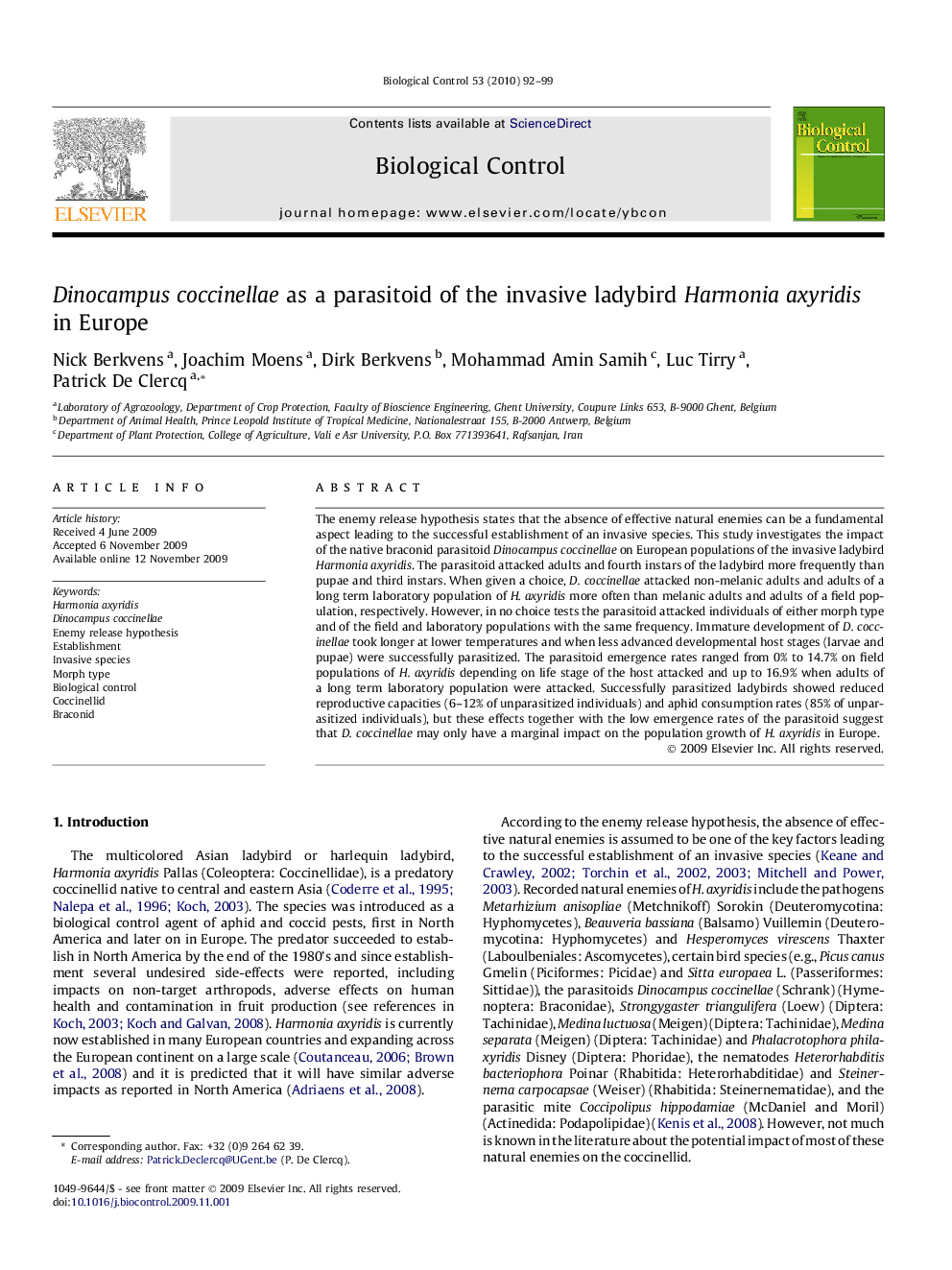| کد مقاله | کد نشریه | سال انتشار | مقاله انگلیسی | نسخه تمام متن |
|---|---|---|---|---|
| 4504572 | 1321099 | 2010 | 8 صفحه PDF | دانلود رایگان |

The enemy release hypothesis states that the absence of effective natural enemies can be a fundamental aspect leading to the successful establishment of an invasive species. This study investigates the impact of the native braconid parasitoid Dinocampus coccinellae on European populations of the invasive ladybird Harmonia axyridis. The parasitoid attacked adults and fourth instars of the ladybird more frequently than pupae and third instars. When given a choice, D. coccinellae attacked non-melanic adults and adults of a long term laboratory population of H. axyridis more often than melanic adults and adults of a field population, respectively. However, in no choice tests the parasitoid attacked individuals of either morph type and of the field and laboratory populations with the same frequency. Immature development of D. coccinellae took longer at lower temperatures and when less advanced developmental host stages (larvae and pupae) were successfully parasitized. The parasitoid emergence rates ranged from 0% to 14.7% on field populations of H. axyridis depending on life stage of the host attacked and up to 16.9% when adults of a long term laboratory population were attacked. Successfully parasitized ladybirds showed reduced reproductive capacities (6–12% of unparasitized individuals) and aphid consumption rates (85% of unparasitized individuals), but these effects together with the low emergence rates of the parasitoid suggest that D. coccinellae may only have a marginal impact on the population growth of H. axyridis in Europe.
Journal: Biological Control - Volume 53, Issue 1, April 2010, Pages 92–99